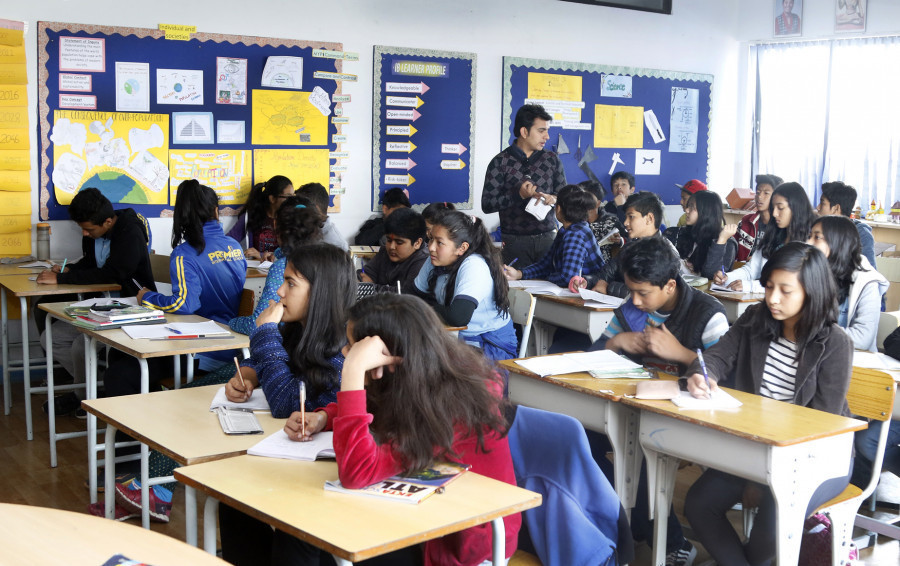National
School dropout remains a challenge, survey report shows
Poverty, parents’ illiteracy and lack of learning environment are major reasons behind high dropout rates, education experts say.
Binod Ghimire
Despite an increase in the enrolment rate, high dropout remains a challenge in school education.
The government’s economic survey report unveiled on Friday shows over two-thirds of the students enrolled in grade one get out of the school system by the time they reach grade 12, which is the final year of the school education. The report shows that the retention rate up to grade 12 in the present fiscal year stands at 29.2 percent.
The retention rate up to grade 10 is also poor. Out of 100 students enrolled in grade one, 36 students leave their study by the time they reach grade 10. “The retention rate till grade 10 is 64.6 percent,” the report shows.
The survey doesn’t give the reasons behind the high dropout rate, though the government has implemented different programmes to increase the retention rate in schools.
Free mid-day lunch in a majority of the districts, free sanitary pads to around 1.35 million girls, scholarships to the girls and the students from the marginalised communities are some of the programmes that have been launched in an attempt to lower dropout rates in schools.
Education experts say these programmes haven’t delivered the desired results because they don’t address the underlying causes of children dropping out of schools.
They say poverty is the major reason for high school dropout rates, as the parents from poor communities tend to mobilise their children in income generating activities to support their families.
The scholarship amount which is less than Rs 1,000 per year on an average, according to the experts is too little to incentivise the parents to send their children to school.
Lack of parent education is another factor.
“The uneducated parents and those from the poor and marginalised community still aren’t aware of the impact of education,” Binay Kusiyait, a professor at Tribhuvan University, told the Post.
Lack of proper school infrastructure and poor learning environment too is responsible for higher dropout rates in schools.
A large number of public schools lack toilets and other infrastructure and they also don’t provide a conducive learning environment for students, Kusiyait said.
“The government always prioritised increasing the enrolment which is a good move. However, proper attention hasn’t been given to increase retention and boost quality of education,” he added.
The net enrolment rate for grade one which was 91 percent in the fiscal year 2013-14 has increased to 97.3 percent in the current fiscal year, according to the survey report.
Though the Ministry of Education, Science and Technology receives the highest budget, over 85 percent of it is spent on paying salaries to teachers and school staff while only a small portion of the budget is allotted for resource materials and boosting the quality of education.
The government has allocated Rs 180.4 billion in the education sector for the upcoming fiscal year which is an increase of Rs 9 billion compared to the current fiscal year. The Education Ministry has received Rs 171 billion in the present fiscal year.
As the government has decided to double the payment of the teaching staff for early childhood development classes and the support staff in schools, most of the increased budget in the upcoming fiscal year will once again be spent on paying salaries.
Education experts say the decision to open residential schools in 13 districts and connect all the public schools with internet facilities within two years are progressive steps that have been announced in the budget on Saturday.
“The budget still lacks focus mainly in the post-Covid situation as students' learning achievement during the pandemic is not even. Lowering dropout and boosting the quality of education should have been its priority,” Bal Chandra Luitel, a professor at Kathmandu University, told the Post. “Also, it lacks necessary programmes to promote the teaching-learning activities during the pandemic. Its implementation will depend on how well the federal government coordinates with the local and provincial governments.”




 5.05°C Kathmandu
5.05°C Kathmandu







%20(1).jpg&w=300&height=200)






